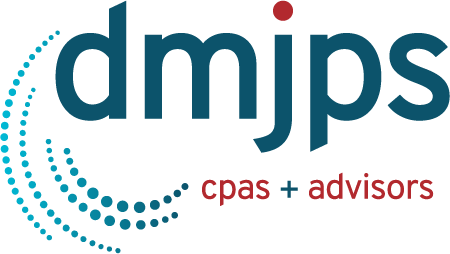 Congress passed the SECURE 2.0 Act as part of the Consolidated Appropriations Act (CAA) of 2023. It gets its name from the Setting Every Community Up for Retirement Enhancement (SECURE) Act of 2019, which made numerous changes to IRAs, 401(k)s and other popular retirement plans. The SECURE 2.0 Act builds on its predecessor in numerous ways. Some of the new law’s provisions have already taken effect, but many will not take effect until 2024, 2025 or later. Plan sponsors should be aware of when the different provisions will become effective. This article offers an overview of this process, along with tips for how plan sponsors can prepare.
Congress passed the SECURE 2.0 Act as part of the Consolidated Appropriations Act (CAA) of 2023. It gets its name from the Setting Every Community Up for Retirement Enhancement (SECURE) Act of 2019, which made numerous changes to IRAs, 401(k)s and other popular retirement plans. The SECURE 2.0 Act builds on its predecessor in numerous ways. Some of the new law’s provisions have already taken effect, but many will not take effect until 2024, 2025 or later. Plan sponsors should be aware of when the different provisions will become effective. This article offers an overview of this process, along with tips for how plan sponsors can prepare.
What Is the SECURE 2.0 Act?
The SECURE 2.0 Act has several goals, as indicated by how its authors organized its provisions:
- Expand the availability of retirement accounts;
- Increase retirement savings;
- Preserve retirement income;
- Make the rules and regulations surrounding retirement plans easier to understand; and
- Reduce the costs to employers of setting up retirement accounts.
The law contains nearly 100 provisions affecting retirement savings.
The following provision, along with others, was already in effect as of January 1, 2023:
Increase of the Lowest Age for Required Minimum Distributions (RMDs)
Prior law required that individual investors take some funds out of their retirement accounts on a an annual basis. Withdrawals from your IRA, SIMPLE IRA, SEP IRA or other retirement plans began when you reached age 70 ½. Under SECURE 2.0, that age will gradually increase over time:
- Age 73 as of January 1, 2023
- Age 74 as of January 1, 2030
- Age 75 as of January 1, 2033
Currently, if investors do not take their RMD, they might have to pay a 50% excise tax on the amount that wasn’t distributed as required. SECURE 2.0 also incorporates certain provisions to decrease the amount of tax payable for failure to take RMDs.
What Provisions of the SECURE 2.0 Act Take Effect in 2024?
The following provisions are among those that will take effect on January 1, 2024:
Mandatory Cash-out Limits:
The limit for mandatory cash-outs, last changed in 1997, rose from $5,000 to $7,000. The Department of Labor’s (DOL) recent changes to Form 5500 redefined large plans by the number of participants with account balances on the first day of the plan year. Per Form 5500, a plan with at least 100 participants with active accounts is considered a large plan and an audit is required. This provision applies to defined contribution plans and is effective for plan years that begin on or after January 1, 2023. Previously large plans with at least 100 eligible participants required an audit. The DOL estimates that nearly 20,000 plans previously considered large plans will no longer be subject to the annual audit requirement due to this change. A plan can distribute monies for terminated participants that have balances below the cash-out limits and lower the number of participants. In doing this, a plan may potentially be able to lower the number of participants below 100 and avoid the audit requirement which saves the substantial cost and time of having to have an audit performed.
Aged-Based Catch-Up Contributions
Current law allows plan participants to make catch-up contributions on either a pretax or after-tax basis, depending on what the plan allows. The SECURE 2.0 Act will change this for some people in 2024. Participants who are at least 50 years old and whose annual wages are greater than $145,000 must be allowed to make after-tax catch-up contributions. This may require some plan sponsors to modify their plans.
Penalty-Free Withdrawals
The new law will eliminate the 10% penalty for distributions to an employee before they reach 59½ years of age, provided that:
- The distribution is no more than $1,000; and
- The participant intends to use the distribution for an “unforeseeable emergency.”
The participant has up to three years to repay an early withdrawal. They may not make another early withdrawal until they have repaid the earlier one.
Different rules apply to early distributions for victims of domestic violence. They may withdraw the lesser of 50% of the account balance or $10,000. They also have three years to repay the withdrawal. They are entitled to a refund of income tax on the repayment.
Emergency Savings Accounts
Plan sponsors will be able to establish emergency savings accounts for employees who are not “highly compensated,” meaning their annual wages in 2023 are no greater than $150,000. Contributions are after-tax. Employers may automatically enroll qualifying employees at a maximum of 3% of their pay, up to an annual total of $2,500. Employers may match contributions up to $2,500.
Employer Matching of Student Loan Payments
Employers will be able to make matching contributions based on employees’ qualified student loan payments. Matching contributions must follow the same schedule as any other types of matching contributions that a plan allows, and they must be available to all eligible employees.
What Provisions of the SECURE 2.0 Act Take Effect in 2025?
Many provisions, including the following, will become effective on January 1, 2025:
Automatic Employee Enrollment in New Plans
To encourage more people to save for retirement, all new 401(k) plans established on or after January 1, 2025 must include automatic enrollment for qualifying employees. Contributions may range from 3% to 10%. Employers are exempt from this requirement if they have no more than 10 employees and have operated for less than three years.
Increased Limit for Annual Catch-Up Contributions
The annual limit for catch-up contributions by participants will increase to the greater of either:
- 50% more than a plan’s normal catch-up limits for participants aged 60 to 63; or
- $10,000.
National Database to Facilitate Payment of Benefits
The SECURE 2.0 Act gives the U.S. Department of Labor until the beginning of 2025 to establish a database that can help employers locate former employees in order to pay them benefits.
How Can Plan Sponsors Prepare?
The following steps can help plan sponsors prepare for the upcoming changes:
- Keep Accurate Employment Records: Many new rules and requirements vary based on factors like age. Accurate employee demographic data are therefore essential.
- Track Progress with a Compliance Calendar: Time is likely to be of the essence for many changes. A compliance calendar can help plan sponsors track their progress.
- Alert Third-Party Providers of Upcoming Changes: Payroll providers and other contractors need to know about changes that could affect their work.
- Make Sure All Plan Documents Reflect the New Requirements: All plan documents need to be up-to-date. They should include all new provisions and requirements.
- Educate Employees About Their New Rights and Opportunities: One of the main purposes of the new law is to promote and encourage retirement savings. Employees need to know what options are available to them.
Be Prepared for Changes in Retirement Savings
The world of retirement planning and savings has gone through numerous changes in recent years thanks to the two SECURE Acts. Plan sponsors have had to work hard to stay ahead of new and modified requirements. All of these changes are manageable with the right help.
If you have any questions or would like additional information, please contact DMJPS.

